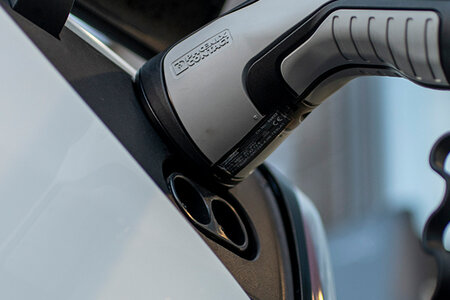Almost half (46%) of car dealers say they worry about the rise in online car purchases, according to research from Close Brothers Motor Finance.
Almost a third (30%) of dealers surveyed in Dealer Satisfaction Survey said they worry about customers turning to online car sale websites instead of dealer showrooms, while 16% are concerned buyers will turn to online marketplaces such as eBay and Facebook.
With the pace of digital speeding up, 58% of dealers have increased investment in their website to meet the growing demand, while 60% have spent more on their social media channels. 62% use more digital tools, such as finance calculators, while 41% have been offering virtual tours of their showrooms/forecourts.
Although online buying has accelerated, further research from the Britain Under the Bonnet report found that drivers are not quite ready to take the full leap with buying a new car online. Instead, motorists say they use digital channels to research vehicle choices, dealerships, and finance options. Just, one in eight (13%) drivers said they would feel comfortable buying a car online without seeing it first. While more than two in five (43%) drivers admitted that they would prefer to browse online but would then like to see the vehicle before buying.
When it comes to car-buying decisions, younger drivers are more likely to be comfortable with buying a new car completely online, and would do so – a fifth (18%) of 17-24 year-olds compared to just 7% of over 55s. Men are also more comfortable than women purchasing cars online at 16% and 10% respectively.
Seán Kemple, Managing Director of Close Brothers Motor Finance commented: “The car buying experience continues to adapt to the technological advances being made across the sector. It’s never been a more critical time for dealers to embrace technology and offer their customers the high-level personal service that they can access from the comfort of their homes.
“After a tough year, which saw showrooms close their doors, potential buyers had no alternative than to research and purchase their car online or hold out until restrictions had been lifted. As such, the online trend is here to stay. Even of those who prefer to buy in person, many will still do their research before stepping onto a forecourt. And this can give dealers an advantage to reach more potential customers. So the value of dealer advice and insight both via digital channels and in person is significant and could lead to more sales. As well as having an accessible and up-to-date digital forecourt, the savviest dealers have been making the most of software and tools to engage with their customers through every stage of the car-buying process.”
To tips for dealers wanting to improve their digital footprint
1. Be available
In what is now a digital world, the phenomenon of being ‘always-on’ is more abundant than ever. Many customers won’t want, or aren’t able, to think about buying a car during the normal 9-5, and they will be doing the bulk of their research online for months before stepping foot onto a forecourt. For those who are looking for advice, quotes, or to follow through with a purchase on evenings or weekends, use your website to highlight how they can contact you. Having a web chat function is an important way of catching customers at a crucial point of their research and offering any insight they need. And make sure that you have all the traditional methods of communication, like a contact form, or an email address which has a clear ‘out of office’ and details when they can expect a response.
2. Let them judge a book by its cover
In the fast-paced digital world, it’s vital that you catch people’s eye. Make your website attractive and easy to use. Ensure your stock has excellent photos and accompanying videos where possible, and if your technology’s software allows, then trying to make it as interactive as possible, for example allowing customers to zoom in and out and really explore your forecourt and stock. Lots of dealers are now creating bespoke videos for customers too. It’s become just as important to invest in your digital forecourt as you would your physical forecourt.
3. You’re an expert – let them see that
Consumers now do the majority of their research online – spending, on average, 24 hours doing research before making a purchase, as we found in our Britain Under the Bonnet survey. Once they know the car they want, they’ll search for the best value across different dealerships. And this doesn’t just mean in terms of price, but elements like mileage, extras, and finance options too. To get ahead, dealers need to highlight the knowledge they have on the website and social channels in order to provide insight and advice at the crucial research stage. Have a section on your website for tips, FAQs, guides, and advice.
4. Social media is key
More and more people are turning to social media to engage with businesses – of all sizes. Use social media properly – think about which channels are likely to work in your area. Being on Facebook is key, but you need to join the right groups, post frequently, and talk about more than just your stock – highlight the services and tools you can offer. If you also set up Instagram, it’s all about the imagery – beautiful photos and attention-grabbing captions are key. It’s also worth considering the different profiles of your buyers. Younger buyers may look on Instagram but if you’re selling executive cars, then you may be better off pushing them through LinkedIn to reach a professional network.
5. Be willing to pay to play
The most effective advertising hitting customers in their leisure zones – and for almost everyone, is via their social media. Facebook is especially good at letting you advertise to precise geographical areas and target specific audiences with certain stock – and if that leads to a surge in leads, you’ll quickly start to see the value for money.
6. Embrace reviews
Reviews are important – the good and even the bad. It’s the first step to giving your customers the chance to share feedback, and to build their trust in your brand. Feedback can be shared directly with you via a webform or an email address if you have one, and publicly via social media or review websites and forums. While the thought of reviews, particularly the public ones, might fill you with concern, they can be incredibly powerful – especially when they are positive. But on the off chance that you get a negative review, reply in a measured, courteous way and do your utmost to rectify the issue as soon as possible.
7. Open up your toolbox
Reaching people is important, but your website also needs to offer tools which guide your customers through every stage of the car buying journey. Many of our dealers, for example, use the Showroom proposal platform, which works in tandem with a dealer’s website. It helps their customers to choose the perfect vehicle and the finance option most suited to them. Through the platform, dealers can use the ‘Remote Quote & Apply’ tool to email vehicle quotes directly, which are then stored and visible in the customer area. Customers can make any adjustments to the terms, including the duration, deposit, and mileage via a calculator tool. Customers can also complete an online finance application form from home and submit it to the dealer. This empowers customers, allowing them to do things in their own time and at their own pace.
8. Don’t get Covid-complacent
Even with the vaccine offering some much-needed optimism, many customers are still likely going to be worried about the risks of coming to the forecourt. For those who want to buy in-person (or need to come in to sign the paperwork), it’s vital that you use your website to signpost the Covid-19 safety processes you’ve put in place. Many pandemic-proofing elements are worth keeping too – whether that’s stock videos or online booking for test drives, these tools make buying a car from you more accessible to a wider pool of people.
9. Put the effort in
You can use your online footprint – whether through a website or social media channels – to reach a huge amount of people that wouldn’t have otherwise visited a dealership. That makes it a worthwhile use of time and resources – so whether it’s carving time out of your day, training up a member of staff and giving them hours in their week to manage social channels, or even bringing in an Intern to support, make the investment, and soon.






